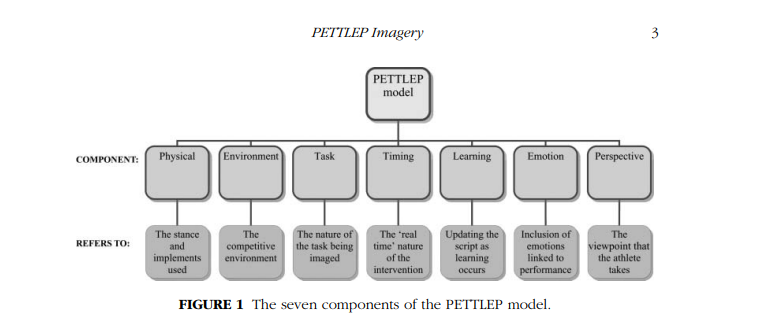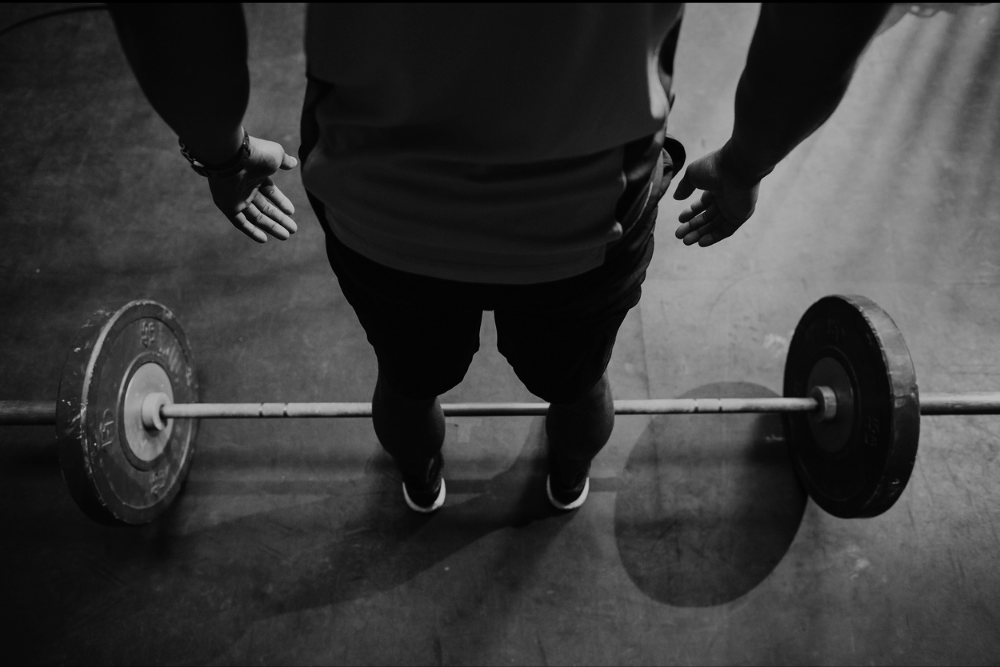IMAGE TRAINING & VISUALIZATION
Visualization and image training are powerful techniques that have been used for decades by athletes, performers, and individuals seeking personal growth and development. These techniques involve mentally rehearsing a specific task or skill, imagining oneself performing it with precision and ease, and experiencing the desired outcome. While visualization and image training were once dismissed as mere ‘mental games’, research has shown that they have real and measurable effects on the brain, the nervous system, and ultimately, on performance outcomes.
In this long-form article, we will explore the science behind visualization and image training, the benefits they offer, and how to use these techniques to improve your own performance, overcome self-limiting beliefs, and achieve your goals. We will draw on the latest research in neuroscience, psychology, and sports science, as well as real-world examples of athletes, performers, and successful individuals who have used visualization and image training to their advantage. Whether you are an athlete seeking to improve your skills and performance, a student looking to ace an exam, or simply someone who wants to overcome self-doubt and unlock your full potential, this article will provide you with the knowledge, tools, and inspiration you need to succeed.
The Importance of Intention and Mindset in Lifting
Have you ever noticed how many discussions about lifting only focus on the physical aspects, such as exercise selection, programming, and proper form? While these are important elements, they only make up 50% of the equation. Even the best strategies and techniques won’t succeed without a strong intention behind them. Without knowing why we’re lifting, the execution of the lift becomes irrelevant,
it’s not uncommon to come across misleading information. However, it’s crucial to remember that there’s no such thing as completely objective information. Even seemingly factual data is inevitably influenced by human emotions since it’s being shared by people. While evidence-based information has become more prevalent, it’s important not to overlook the fact that the data we consume is inherently biased. This bias can sometimes contain negative experiences that can ultimately develop into self-limiting beliefs. It’s vital to recognize that as emotional creatures, our mindset and beliefs can significantly impact our physical performance.
It’s not uncommon for people to consume an excessive amount of information, to the point where they begin to adopt the personality and beliefs of those they’re learning from. However, this can lead to a loss of authenticity, where individuals prioritize achieving their goals over their own genuine desires. This is one form of misdirection.
Another form of misdirection can come from limitations placed upon us by others. At some point in our fitness journey, we may have been told that achieving a particular physique was impossible for us. Even if this statement is not accurate, it can still plant seeds of doubt and limit our potential. This is disenchantment, and it can lead to a jaded outlook on life. Rather than limiting our potential, information should expand our horizons and help us reach our goals while remaining true to ourselves.
In most cases, setting unrealistic standards for yourself doesn’t have a negative impact on your life. Even if you fall short of your goals, you still end up with something valuable and rewarding because you accomplished something. On the other hand, if you believe those who try to protect you from disappointment, you may not put in the necessary work and end up with no results at all.
The Power of Belief
Belief in oneself is paramount to achieving success in any endeavor, be it physical or otherwise. The tales of the Greek gods and heroes, with their superhuman strength and physique, are not meant to be taken literally. Instead, they serve as inspiration to set lofty goals and transcend the limitations of the physical world to achieve greatness in the spiritual realm. To attain greatness, one must first believe it is possible and pursue an idea worth striving for.
Having a mediocre goal will result in putting less effort and time towards achieving it, which can lead to lower self-esteem and less fulfillment. Instead, it’s important to have an unattainable goal or an idea created through image training. These expectations should be so big that even you yourself have trouble believing that it is possible. Only then will you have a goal worth pursuing. If the goal is too realistic and easily achievable, then it’s not worth shooting for. It’s only by setting high goals that one can achieve greatness.
Visualizing Your Ideal Physique
To achieve a remarkable transformation, your ideal physique should be one that appears almost unattainable with arms, legs, waist, and everything else looking too massive and perfectly tapered. Despite knowing that it is impossible to achieve, you should make it your goal and strive for it relentlessly. By doing so, you will push yourself beyond your limits and achieve impressive results, even if you fall short of your ultimate goal.
After creating your ideal physique in your mind, it’s important to visualize it regularly and make it a constant thought. This visualization should become an obsession to the point that you might want to have reproductions of it in your gym, around your house, or even in your bedroom. Consider having a poster of it, and look at it frequently. This constant reminder of greatness that you do not yet possess will motivate you to put in more effort and push your spirit upward.
Once you have visualized your ideal physique, it is important to re-enchant your life and push away self-limiting beliefs. Otherwise, seeing your visual representation of your body may only remind you of your perceived failure. To avoid this negative mindset, you must reclaim your innocence and approach your goal with an open mind, as you did when you were a child watching superheroes. Although it may not be possible to fully achieve this mindset, you must push away the irrational side of your mind that tells you it is impossible.
In a way, you should approach your goal like a sculptor approaching a statue. The sculptor must first visualize the statue in their mind before it can exist in reality. Similarly, you must visualize your ideal physique and believe in your ability to make it happen. With this approach, you will be more likely to achieve your goal and push yourself to put in the necessary effort.
Belief is the key factor that allows a sculptor to transform a simple piece of stone, wood, or clay into a beautiful work of art. And when it comes to building your body, the process is even more straightforward and achievable than creating a statue. After all, adding muscle is a biological process that is within the realm of possibility for anyone. So, if you can’t even imagine yourself with the physique you desire, then the chances of you making it a reality are slim to none. It’s essential to cultivate a strong belief in your ability to achieve your goal, just like a sculptor has faith in their skills and vision to create a masterpiece.
Combining Visualization & Action for Physical Transformation
The second step of image training is to take action towards your goal while maintaining the same level of intense focus and belief in yourself. This means that you should continue to visualize your ideal physique and believe that you can achieve it, but you also need to take concrete steps towards making it a reality. This may mean working out consistently, following a strict nutrition plan, and making other lifestyle changes that will help you reach your goal.
The key is to maintain the same level of intensity and focus in both your visualization and your actions. This will create a powerful synergy that will help you achieve your goal much faster than if you were just visualizing or just taking action. So, remember, visualization without action is nothing, and action without visualization is aimless. It is the combination of the two that will lead to true manifestation and success.
Image training will involve utilizing psychological techniques to aid in the development of our physical bodies.
The concept of self-limiting beliefs is crucial when it comes to image training and building your physique. Even if you have reclaimed your innocence and started to believe that you can achieve your desired body, if you don’t believe in the method or strategy that you’re using, it will all be for nothing. You could have the best training and technique, but without belief in the effectiveness of the process, you won’t achieve your goal.
This is where the placebo effect comes in. The placebo effect is when a person is given a drug or treatment that has no actual effect, but they believe it does and therefore experience positive outcomes. This effect highlights the power of belief and the role it plays in achieving desired results. Despite being a well-known phenomenon, we still don’t fully understand how it works. However, using psychological tricks and promoting belief in the method can promote the construction of our physiques and help us achieve our goals.
The effectiveness of the placebo effect has been verified many times, yet the lifting community has not fully utilized it. Some individuals may discredit a lift or method as only working because of placebo, but this viewpoint ignores the power of belief. What if we harnessed this effect and applied it to all aspects of our training? Even if a technique is not optimal, if we believe it to be, we can still achieve great results. On the other hand, if we have a negative belief about a supposedly optimal exercise, it can become suboptimal due to the nocebo effect. This illustrates that lifting cannot be solely limited to the physical, as our beliefs can impact the physical outcome to a significant extent.
The success of an action relies not only on its execution and selection, but primarily on the belief that it will yield positive outcomes. It is crucial that you believe in yourself and your training methods to achieve your goals. However, simply being told to have self-belief is not sufficient. To maximize the use of the placebo effect, one effective method is to visualize the muscles being trained during the exercise. Although this technique may not have a scientific basis, it works because it enhances your belief in your ability to transform your muscles. This can lead to increased effort, consistency, and ultimately, better results. Therefore, it is important to connect your ideal physical goals with your practice in the gym by envisioning the outcome you desire as you train each muscle group.
The idea here is to visualize the physical outcome you desire while you are performing your exercises. For instance, when you are training your biceps, try to imagine how you want your bicep to look like – the shape, size, definition, etc. This mental imagery can help activate the placebo effect and enhance your motivation and effort during your workout. It can also help you stay focused and engaged in your training, making each repetition and set more meaningful. Additionally, this visualization technique can improve your mind-muscle connection, which is the ability to mentally control and engage the specific muscles you are targeting with your exercise. By integrating this mental aspect into your training, you can potentially enhance your physical results and make your training more effective.
The mind muscle connection has two aspects, physical and mental. While the physical aspect involves your ability to contract the muscle effectively during training, the mental aspect is more significant. It involves picturing in your mind what you want the muscle to look like as you train it. This may sound unbelievable until you realize that it is simply an application of the placebo effect, where whatever the mind believes can manifest in reality. The human mind has limitless potential and creative ability as long as it has belief in itself.
A powerful method of utilizing the mental aspect of mind muscle connection is to practice visualizing your sets throughout the day. This involves imagining yourself performing the sets of your upcoming workout either during the day or before the actual workout. By visualizing in advance, you can increase your focus during the actual sets, as you already have a mental blueprint of how you want to execute them.
The Benefits of Motor Imagery Training for Athletic Performance Enhancement
Training through internal motor imagery (IMI) has the potential to enhance voluntary muscle strength without physical exercise. This is achieved by strengthening the brain-to-muscle command and improving motor unit recruitment and activation. Moreover, IMI training may bring about changes in the cortical motor control network’s activity level, leading to greater descending command to the target muscle and increased strength.
Athletes can incorporate imagined muscle contractions, particularly during rest periods of physical training, to enhance their concentric strength.
It’s not just your imagination. Motor imagery training (MI), a mental simulation of a movement without overt muscle contraction, is a viable tool to maintain and increase physical performance capacity among professional athletes during periods of forced detraining.
In healthy adults, motor imagery (MI) practice can also enhance maximal voluntary strength (MVS), albeit to a lesser degree than physical practice.
During rest periods, the priming effects of MI practice can yield higher muscle activation and force performance, independent of physiological arousal and motivation.
Two studies compared the effects of PETTLEP-based (Physical, Environment, Task, Timing, Learning, Emotion, Perspective) imagery with traditional imagery methods in two different sports, hockey and gymnastics. PETTLEP imagery was found to be more effective in improving performance than traditional imagery methods, suggesting that PETTLEP-based imagery could be a useful tool in sports training.

The human primary motor cortex is activated during observation as well as execution of motor tasks. That means that by watching yourself or someone else performing a lift or task you can activate the primary motor cortex in a similar way to executing the same actions.
Combining PETTLEP-based imagery with action observation can enhance sports performance and provide sport psychologists more control over the imagery experience. This approach has become increasingly popular in the delivery of imagery interventions in sport.
Using PETTLEP imagery enhances strength performance, which should be considered by practitioners delivering resistance training programs.
Studies have shown that PETTLEP-based imagery can be effective in enhancing sports-specific skills when combined with physical practice. Studies have examined the effects of PETTLEP on amateur boxing, basketball, volleyball, and football pass skills,
suggesting that PETTLEP-based imagery can lead to greater improvements in skill performance compared to traditional imagery or control conditions. Additionally, the perspective (internal or external) of the imagery may not always have a significant effect on performance, as other factors such as the motor task characteristics and skill level of the athlete may play a role.
The benefits of image training for improving strength and technique are undeniable. By visualizing yourself successfully completing a task, you remove any self-limiting beliefs and gain confidence in your ability to achieve the desired outcome. This confidence is further reinforced by the fact that you have already experienced success in your mind.
Through image training, you can also overcome negative biases and limitations that have held you back in the past. By focusing on positive and effective methods, you can eliminate self-doubt and self-limiting beliefs, freeing up space in your mind for productive and empowering thoughts.
The key to successful image training is to approach it with an open mind and a willingness to learn. By unlearning negative biases and embracing new information, you can use your knowledge to build towards your goals rather than letting it hold you back. Ultimately, image training can help you tap into your full potential, allowing you to achieve greater success in all areas of your life.







